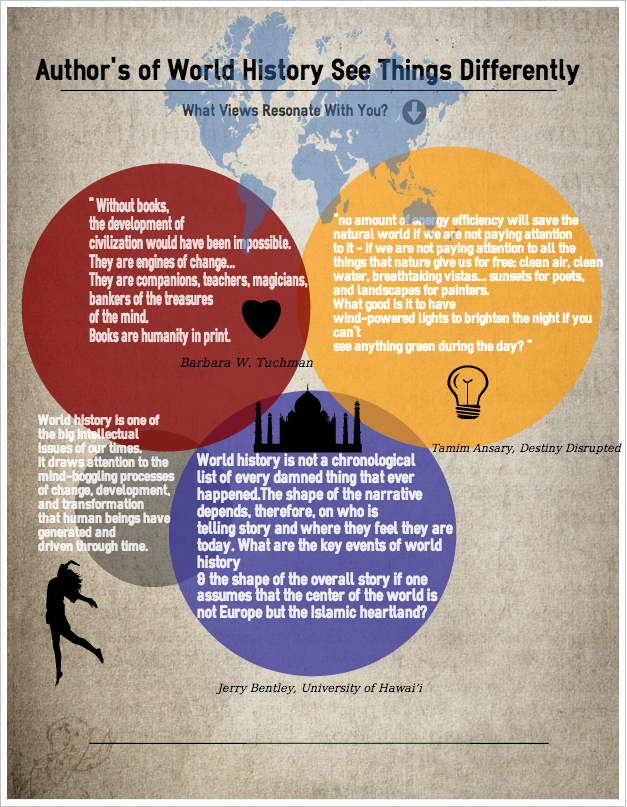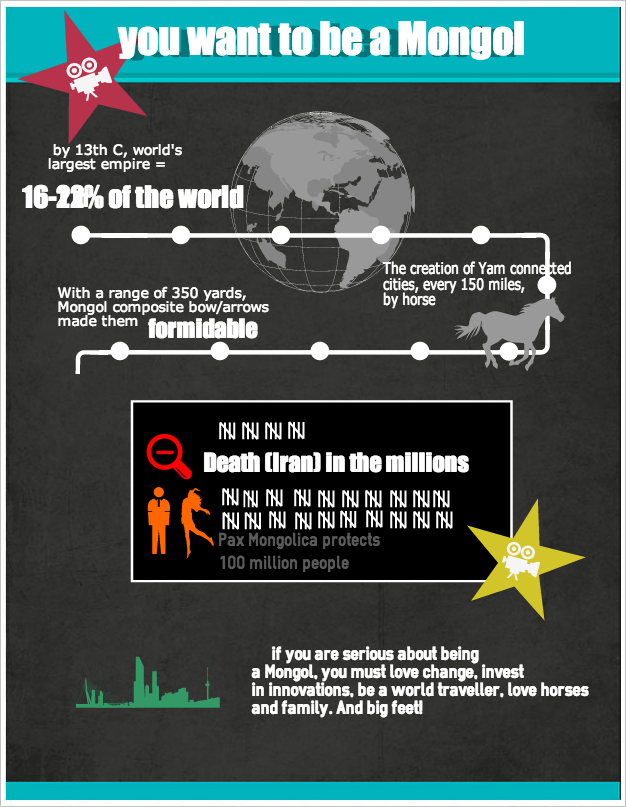This is a guest post by Whitney Kaulbach, an Advanced Placement World History teacher. She found that, by using infographics, her students could study, share their interpretations of events, and retain more information before the big test!
Sometimes students and teachers lack the luxury to work on projects for extended periods of time.
For example, in my AP World History Course (#WHAP) students must understand 10,000 years of history before the May exam date. In my Modern World Studies course, we have deadlines for research that corollate with guest lectures or collaborations with other classes. Digital tools have made it easier to focus student attention to historic content when I shift classroom management to emphasize:
- more class time for experimenting with one or more digital tools.
- use of rubrics that credit students for time spent creating. (Creation is not necessarily completion)
- investment in online communities that share resources and provide feedback.
Incorporating Easelly visual presentation into classroom routines helps me fulfill those goals.
I love how easy it is to give students the task of designing a visual to represent a primary source reading and a related topic. They, in turn, can access a library of shared themes. The plethora of expert and amateur models provide direction and a range of ideas for presentation. There is something that appeals to every learning or creative style.
Infographics help express and dispel information at a glance. And they help students emphasize point of view which happens to be a difficult skill when students are attempting to analyze perspectives other than their own.
Meeting CCSS.ELA-LITERACY.RH.11-12.6
Evaluate authors’ differing points of view on the same historical event or issue by assessing the authors’ claims, reasoning, and evidence.
What did this person mean? Who was this written for? What did they look like? are traditional questions for segmenting primary sources into chunks that students can understand. Chunks accompanied by notes and images are visual interpretations that can be expedited into social platforms or class discussions as they relate to the research topic.
And the visual is not a final product. It is a creation that begs to be shared.
Follow up questions, “So, what is missing? What can we add to this? How should we build our research from this one perspective? give students the opportunity to change their text, their images or to combine their presentations into a true curation of collected research.

Let’s take the topic of Mongols in history. Most students have been taught one historic perspective of the bloodthirsty people responsible for delivering a Bubonic Plague and waves of destruction in Eurasia.
If I ask students to quantify the Mongol rise to power by providing access to digital libraries (such as Columbia) I can educate students on the power of perspective and the power of numbers as quantifiers of evidence.

It is the CCSS expectation for reading stories and literature to push students to routinely refer back to what they’ve read while Easel.ly provides that platform for sorting and framing memory.
It works best if students are given a database of primary sources to sort through.
For example, using Asia for Educators/ Columbia University site on Mongols combined with Easelly database of themes for a simple curation meets the needs and desires of differentiated learning. It works well when I push students to present their visual interpretations to small groups, using the “speed dating” model of rotation which can be done in the classroom or later, online with comments on a social platform.
Students are curious to view different peer creations yet will search for common ground if the expectation is to draw conclusive evidence from more than one presentation and to finish with a minimal three sentence conclusion that expands their original understanding of Mongols.
I look forward to starting this upcoming school year with simple images, simple messages that unfold into inviting discussions wherever they can take place. A classroom is no longer four simple walls. The possibilities are endless.
Whitney Kaulbach has a wealth of experience being a public school teacher. Check out Whitney’s blog and Twitter!
